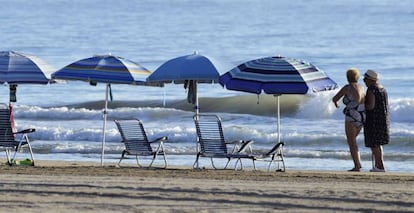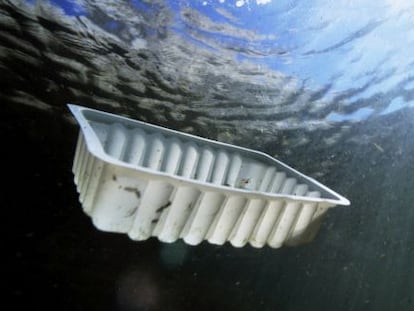Temperatures of Spanish coastal waters hit record highs
Deep-sea buoy off the Mediterranean coast of Tarragona, in Catalonia, registers 27ºC
The temperature of the waters off Spain’s Atlantic and Mediterranean coasts has hit record highs in June, according to measurements taken by the country’s network of deep-sea buoys. For the first three weeks of June between 2007 and 2017, the water temperature varied between 0.5ºC and 2.5ºC. The biggest increase has been in the Mediterranean, where a buoy moored off the coast of Tarragona registered a 2.5ºC increase in June of 2016, reaching a record 27ºC, the highest throughout the country.

This June, which has been among the hottest in 50 years in Spain, has seen record water temperatures along Spain’s Atlantic Cantabrian coast, with a buoy off Cabo Silleiro, in Galica, recording 19.9ºC, up 1.25ºC from last year. At Bilbao, further east along the Atlantic coast, the water temperature reached 23.5ºC.
At Cabo de Gata, in the Mediterranean, a buoy recorded water temperature of 24.3ºC centigrade, an increase of 2.48ºC.
Ana Casal, a climatologist with Spain’s AEMET weather service, says that such high sea temperatures are unusual, noting that there have been increases of up to 3.5ºC in the waters off Murcia, Valencia and Alicante, in the Mediterranean, while the Strait of Gibraltar registered temperatures of between 20ºC and 22ºC.
Warmer seas mean the arrival of invasive species to Spanish waters
She says that between September and October, the waters off Spain’s coast may well get hotter. “The sea doesn’t easily retain heat or cool down, which is why we get high temperatures on land in July and August, but later in the year in the sea,” she says.
José Luis Acuña, a marine environmentalist at the University of Oviedo, warns of the impact on sea life of rising temperatures. “In the Cantabrian, where there are more and more days when the temperature is above 20ºC, seaweed forests have virtually disappeared in the last 10 years,” he says, adding that rising water temperatures are problematic for migratory animals, such as Mediterranean turtles.
Another consequence of warmer sea water is the arrival of invasive species. “It is possible that populations that do better in warm water will begin to move in. In the Cantabrian we are starting to see fish that are typically from the south,” he says.
The problem is particularly serious in the Mediterranean, where there are at least 775 invasive species, according to recent studies.
English version by Nick Lyne.
Tu suscripción se está usando en otro dispositivo
¿Quieres añadir otro usuario a tu suscripción?
Si continúas leyendo en este dispositivo, no se podrá leer en el otro.
FlechaTu suscripción se está usando en otro dispositivo y solo puedes acceder a EL PAÍS desde un dispositivo a la vez.
Si quieres compartir tu cuenta, cambia tu suscripción a la modalidad Premium, así podrás añadir otro usuario. Cada uno accederá con su propia cuenta de email, lo que os permitirá personalizar vuestra experiencia en EL PAÍS.
¿Tienes una suscripción de empresa? Accede aquí para contratar más cuentas.
En el caso de no saber quién está usando tu cuenta, te recomendamos cambiar tu contraseña aquí.
Si decides continuar compartiendo tu cuenta, este mensaje se mostrará en tu dispositivo y en el de la otra persona que está usando tu cuenta de forma indefinida, afectando a tu experiencia de lectura. Puedes consultar aquí los términos y condiciones de la suscripción digital.
More information
Archived In
Últimas noticias
Most viewed
- Sinaloa Cartel war is taking its toll on Los Chapitos
- Oona Chaplin: ‘I told James Cameron that I was living in a treehouse and starting a permaculture project with a friend’
- Reinhard Genzel, Nobel laureate in physics: ‘One-minute videos will never give you the truth’
- Why the price of coffee has skyrocketed: from Brazilian plantations to specialty coffee houses
- Silver prices are going crazy: This is what’s fueling the rally










































